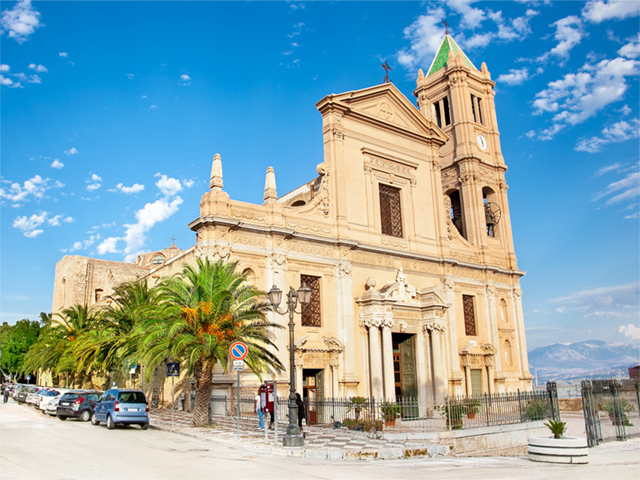Palermo: 10 things to see and do
Palermo: Italian Capital of Culture 2018: main places of interest to visit on foot and what to see in one, two or three days in Palermo and surroundings.Here’s how to visit the most beautiful places of interest in Palermo and surroundings (also on foot) and what to see if you have one, two or three days available: from the Palatine Chapel to the Church of the Martorana, from the Cathedral to the Palace of the Normans, from the Pretorian Fountain to the historic market of Ballarò. 10 places to see in one, two or three days!
Recently named Italian Capital of Culture 2018, founded between the 7th and 6th century by the Fenicians, Palermo has always been an important junction between West and East: Fenicians, Greeks, Romans, Arabs, Normans, Suebi, French and Spaniards: for many centuries the history of Palermo has been influenced by the domination of different cultures and by the meeting-clash of people that have made Palermo a city of a thousand faces to be discovered.
3-HOUR WALKING AND STREET FOOD TOUR
1. Palermo Cathedral
Absolut symbol of the city, Palermo Cathedral devoted to the Assumption of Virgin Mary, with its extraordinary blend of different architectonical styles, represents very well the history of Sicily and its dominations.
It was initially built as a Christian church in the XVII century and transformed into a Mosque in the XIX century by the Saracens. The church was finally reconverted into Christian cult in 1100 by the Normands.
The main facade, set between two towers, presents a wide 15th-century Catalan Gothic style portico, a late Baroque dome and the oldest part, an apse with wonderful Arab and Norman decorations.
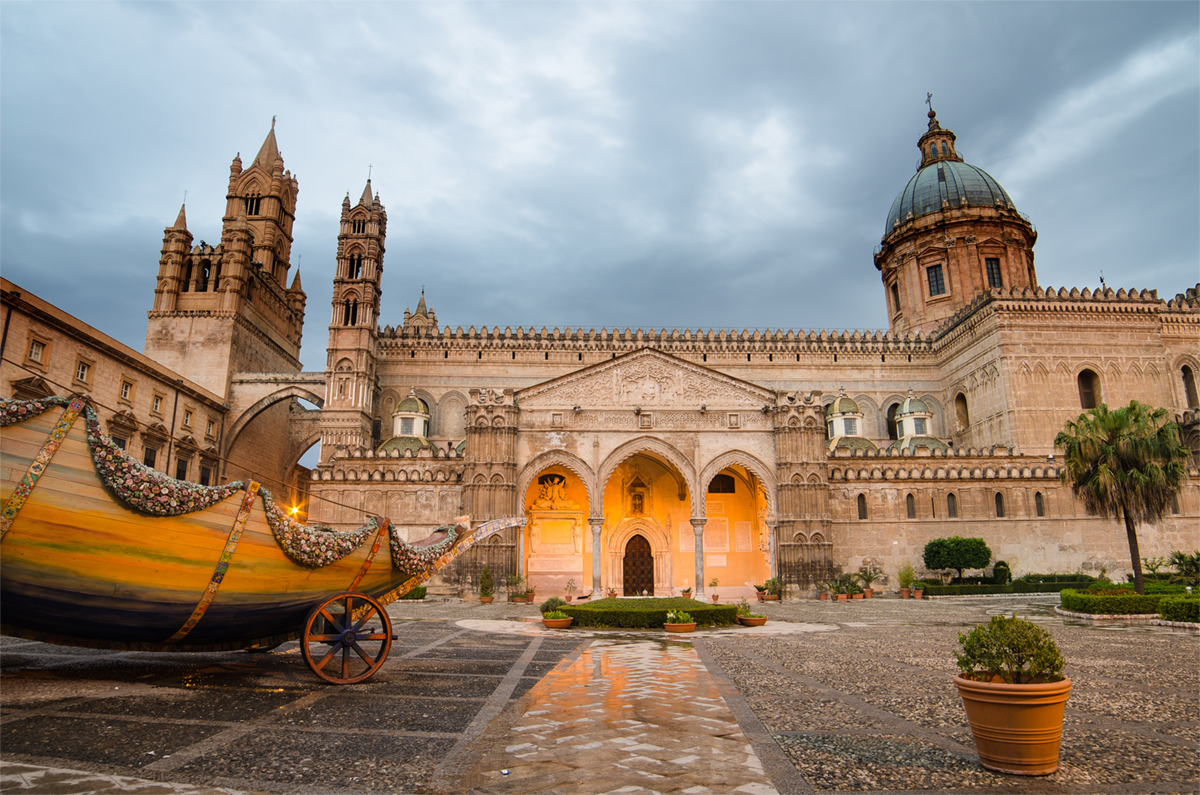
Palermo Cathedral
The interior is divided intro three Neoclassical spaces, rebuilt according to a project by Ferdinando Fuga in the 19th century. Here are kept the remains of Sicilian royals, like Frederick II and Roger II, and Saint Rosalia, patron saint of the city.
Don't miss a visit to the Treasure Rooms, where you can admire the gold tiara of Queen Costance of Aragon, as well as other precious objects found in the royal tombs.
2. Church of the Martorana
In Piazza Bellini is the Church of Santa Maria dell’Ammiraglio, also known as San Nicolò dei Greci, but called by everybody Church of the Martorana, considered among the most beautiful Byzantine churches in Italy.
The building still preserves the original Arab-Norman style, with a squared form surmounted by a hemisferic dome and an open belltower with archs and three orders of big mullioned windows.
Once you pass the entrance threshold you'll be enraptured by the richness of the frescoes, by the mosaics and by the complexity of the decorations, with an image in the center of the Christ Pantocrator surrounded by archangels, apostols, saints and prophets. The other scenes represented are the Nativity, the Transition of Mary, the Annunciation and the Presentation in the Temple.
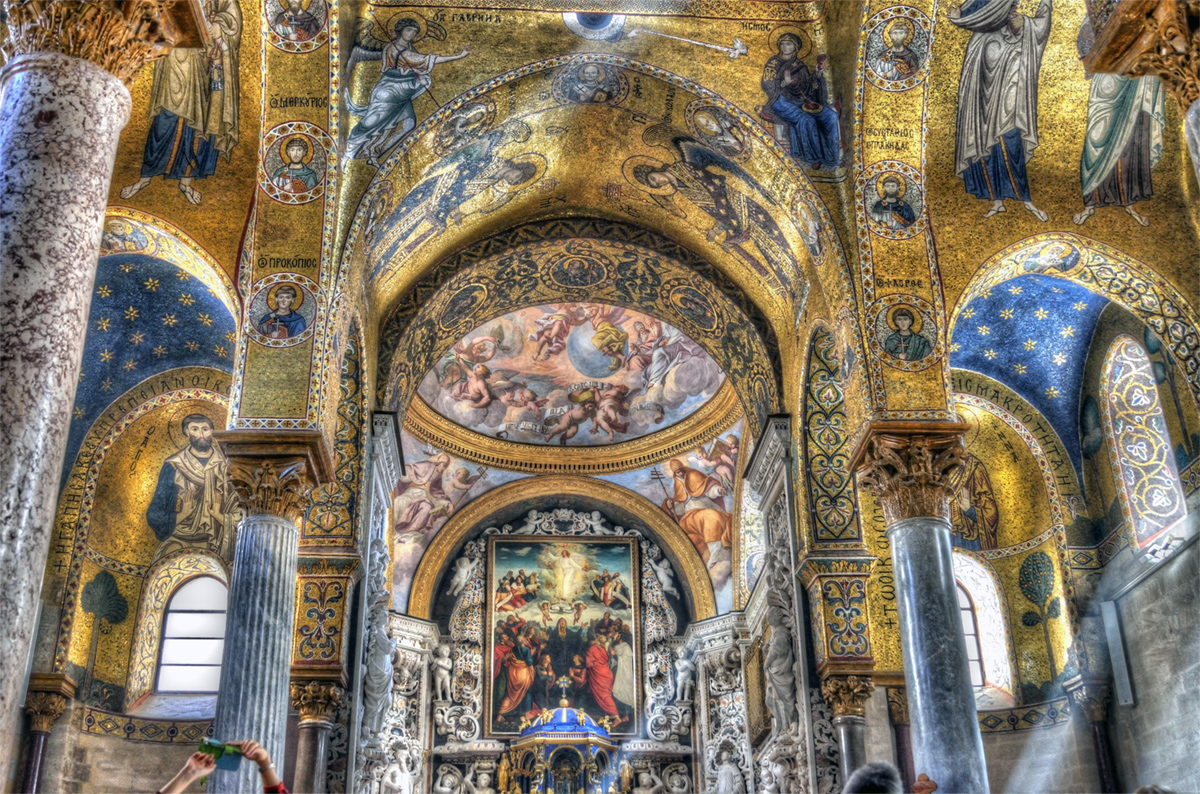
Splendid mosaics in the Church of the Martorana - Palermo
3. Palace of the Normans (Royal Palace) and the Palatine Chapel
Also known as Royal Palace, the Palace of the Normans is the oldest royal palace in Europe: it is today seat to the Sicilian Regional Assambly, as well as one of the most appreciated monuments of the city.
The only two towers that have survived up to our time are the Tower Pisana and Tower of the Gioaria, both built by the Normans. In addition, you can also visit the Red Room, the Yellow Room, the Green Room, the Room of Hercules (seat of the Regional Assambly) and the Room of King Roger.
At the first floor of the palace is located the splendid Palatin Chapel, a Byzantine pearl devoted to Saint Peter Apostole. It is a basilica with three naves, decorated with wonderful Byzantine mosaics, considered among the most beautiful in Sicily, and with a great wooden roof where stands the image of Christ Pantocrator represented with the right hand raised in blessing.
A thrilling visit that you can absolutely not miss during your stay in Palermo!

Palace of the Normans (Royal Palace) - Palermo
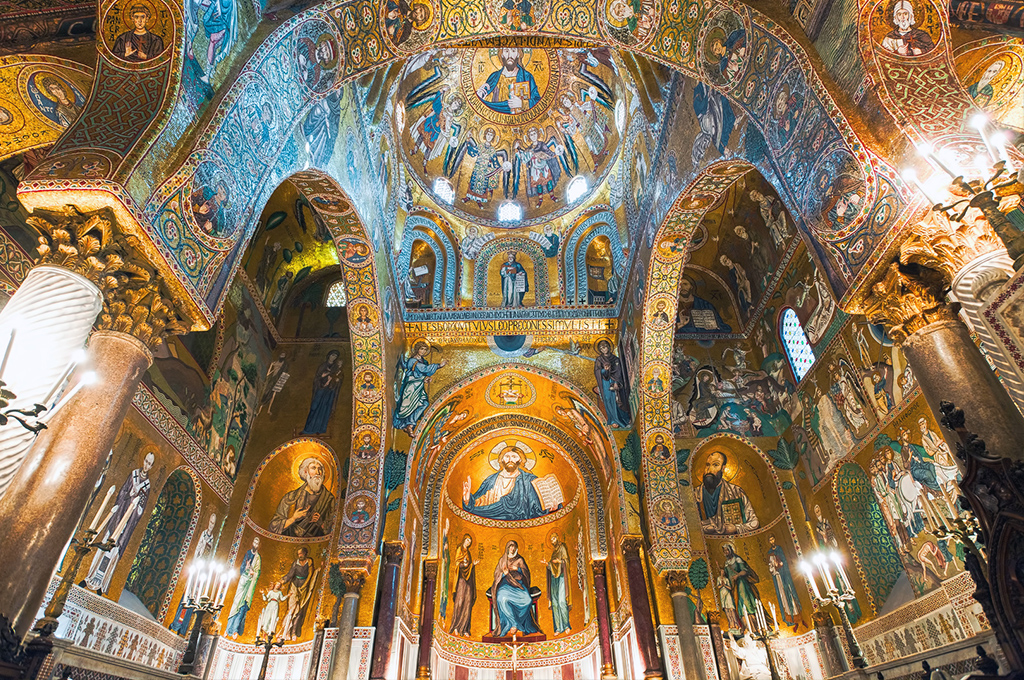
Palatine Chapel - Palermo
4. The rooms at the Genio
Whether you like ceramics or not, we recommend to you a visit to a particular house-museum, unique in the world: the Rooms at the Genio.
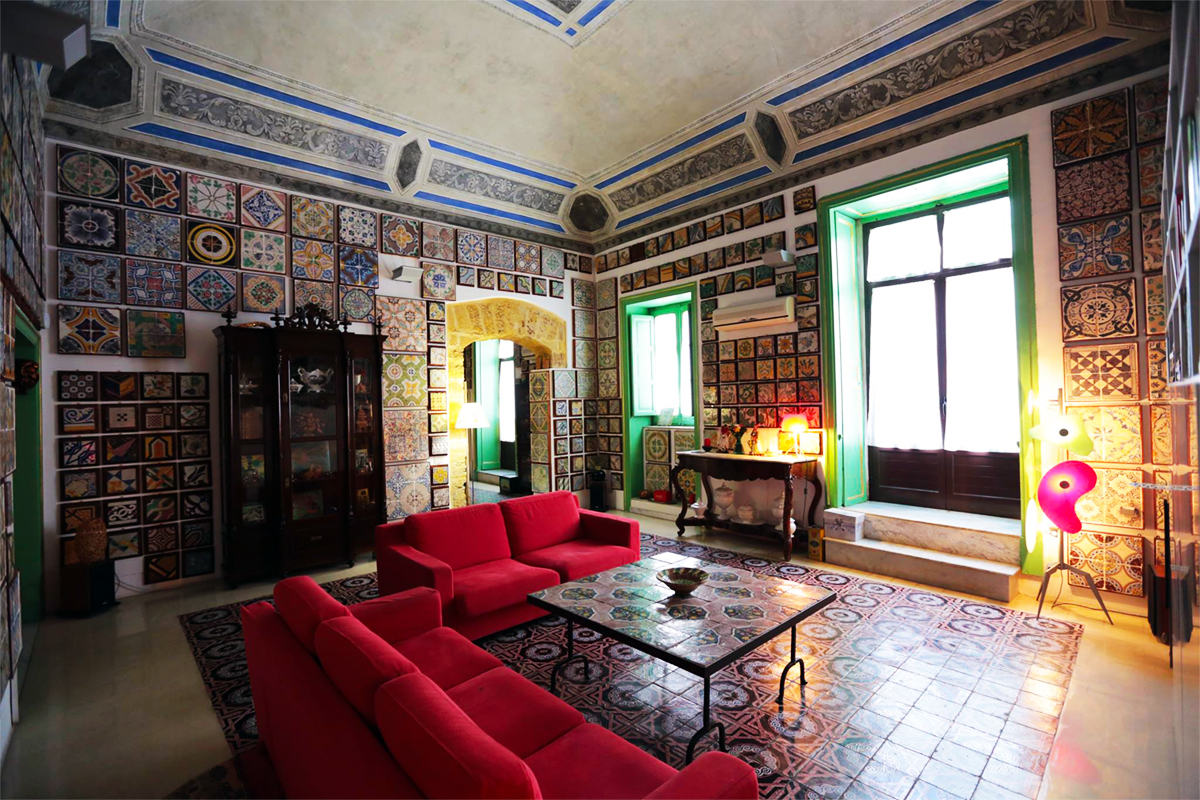
The rooms at the Genio - Palermo (www.stanzealgenio.it)
Located in Via Giuseppe Garibaldi, inside the wonderful historical palace of Torre Piraino, the small museum contains well 2300 pieces of old Sicilian and Napoletan majolicas.
The extraordinay collection is organized along 4 splendid rooms: hall, kitchen, room of the flowers and Neoclassical room, following an itinerary based on the age and the geographical origin of the pieces.
Maybe the ticket price is not very cheap (€7) but we assure you that the view will remain impressed forever!
5. The Chinese Palace
The Chinese Palace is an old royal abode owned by the Borbons of Naples, placed next to the Park of the Favorita, at the edge of the Nature Reserve of Monte Pellegrino.
The building was built by Giuseppe Venanzio Marvuglia from 1799 under commission of Ferdinand IV de Borbon who had bought a Chinese style house from baron Benedetto Lombardo, as well as the adjoining lands and some other buildings.
The house is unique thanks to its Oriental look and decorations, as well as the neat wide gardens. Inside you can admire very beautiful frescoes and many other details that decorate the walls of the rooms, each with a different style.

The Chinese Palace - Palermo
6. The Praetorian Fountain
Also called the Fountain of Shame for its naked statues, the Praetorian Fountain is a symbol of Palermo and one of the most beautiful fountains in Italy.
Built in Florence by Francesco Camillani, commissioned by Spanish noble Don Luigi Toledo, the fountain was reselled to the Palermo Senate by the son who had fallen into disgrace.
Dismantled in 644 pieces, it was carried by sea to Palermo and to make room for it, some buildings in Piazza Pretoria were taken down. Unfortunately, during the transportation, some statues were damaged and restoration interentions were afterwards required.
At the center there is a cupid, nicknamed the Genius of Palermo, who pours water. Around the cupid are other statues representing mythological figures: Venus, Adonis, Hercules, Bacchus, Apollo, Diana and Pomona as well as the allegorical representation of the 4 rivers of Palermo, that is, Oreto, Papireto, Gabriele and Maredolce.
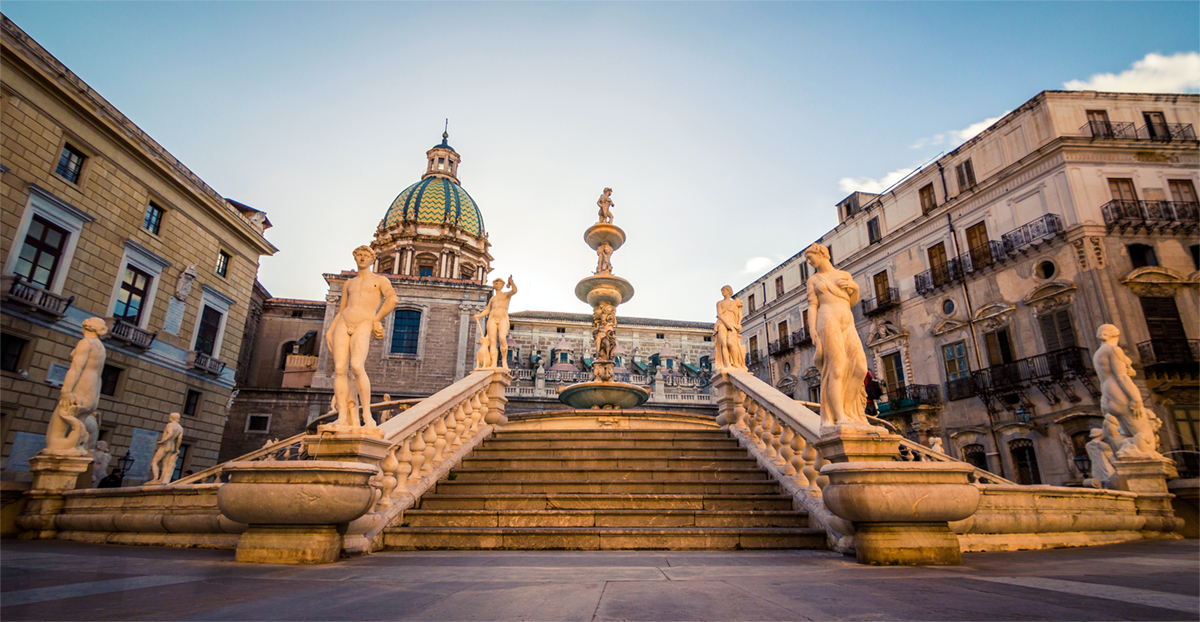
Praetorian Fountain - Palermo
7. Ballarò and other markets in Palermo
For a true visit you cannot avoid to explore the local markets of Palermo and especially Ballarò.
Immerse yourself in the colors, in the taste and the fragrance and allow yourself to be surrounded by the authentic atmosphere of the city! Ballarò is located near the central station, while the market of Vucciria is located near the Church of Martorana.
Arancine and panelle, sfinciuni and cicireddu and many other specialities: among the numerous stalls of the markets you will find the best of the Sicilian street food and restaurants ready to welcome you: Buon appetito!
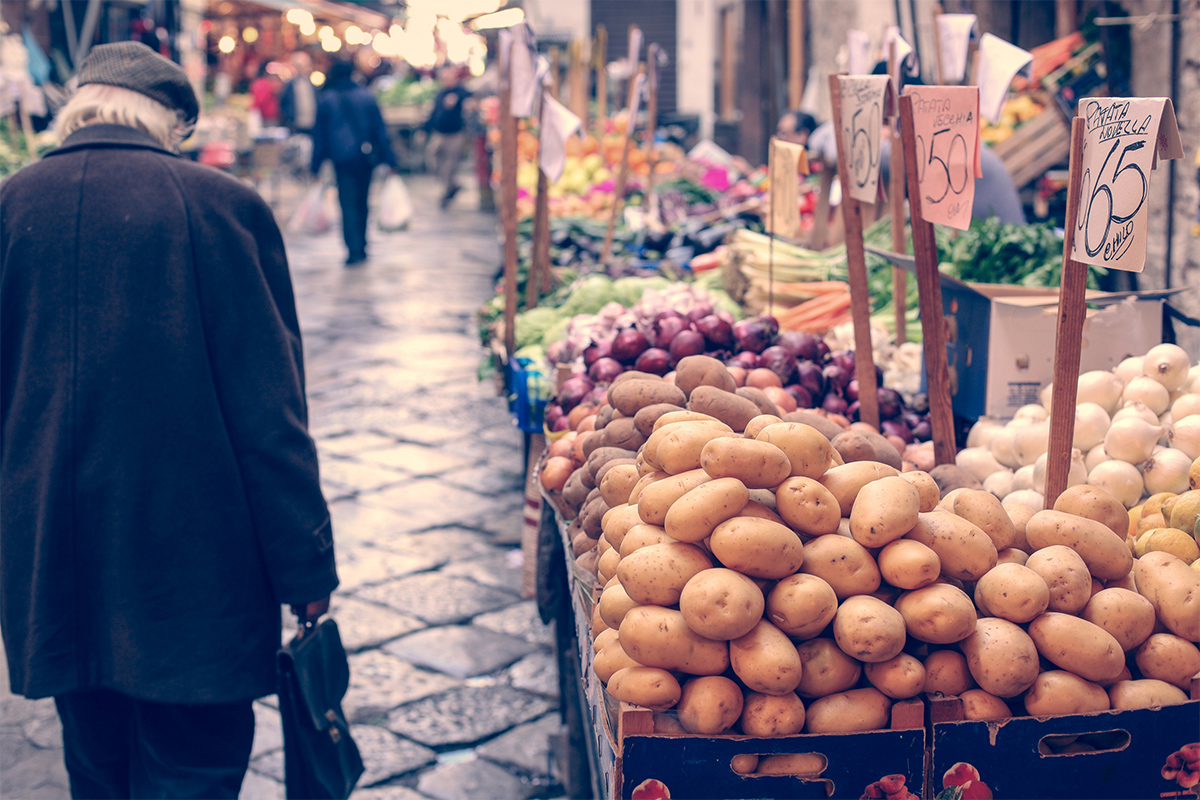
Ballarò Market - Palermo
8. Mondello Beach
After all this eating, there is nothing better than to enjoy a little well-deserved relaxation! The Mondello beach with its clear water and white sand recalls the Caribbean.
The beach is very popular, especially in the warmer months but it turns into a real paradise in May or June. All around the buildings in liberty style, the bars and restaurants contribute to create a unique atmosphere in this place: an absolute must for all lovers of the sun and the sea.
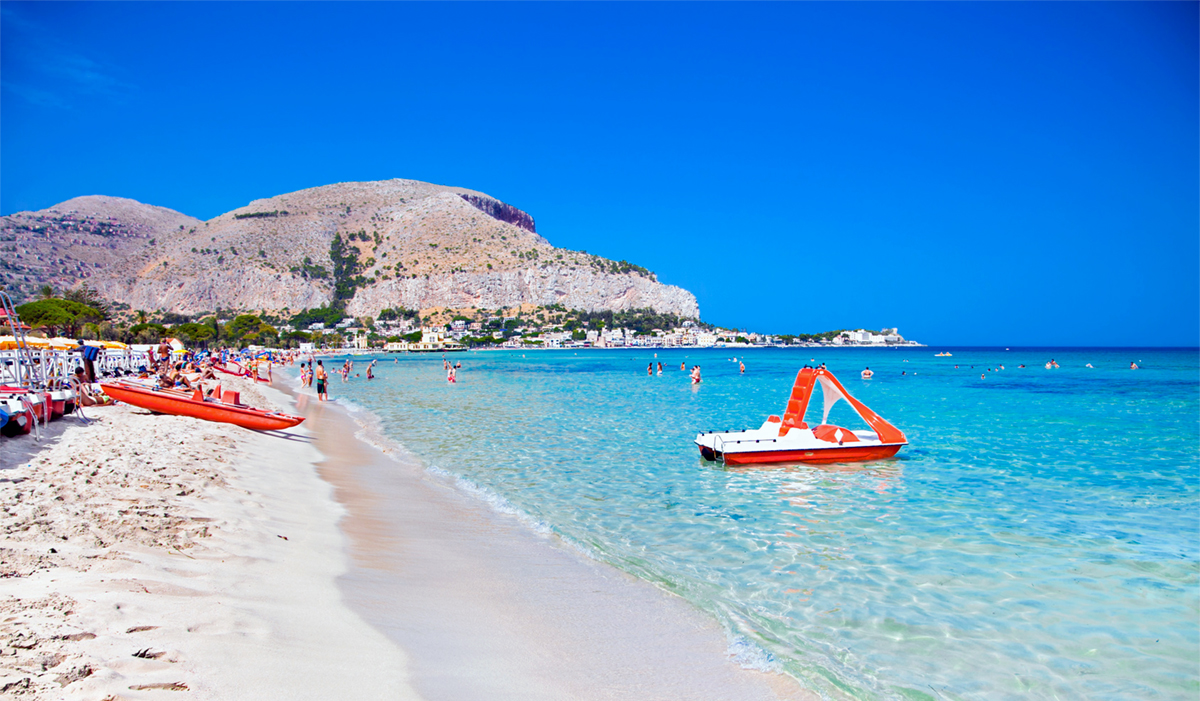
Mondello Beach - Palermo
9. Il Teatro Massimo
"L'Arte rinnova i popoli e ne rivela la vita. Vano delle scene il diletto ove non miri a preparar l’avvenire" ("The Art renews the people and reveals its life. The compartment of the scenes the beloved where does not seek to bake the future"): This is the sentence that you read on the pediment of the majestic Teatro Massimo of Palermo, one of the most representative jewels of the city.
Impressive, elegant and of great charm, the Teatro Massimo is the largest theatrical lirycal building in Italy and third in Europe, after the Paris Opera and the Staatsoper in Vienna.
Even if you won't attend one of the shows in the program we recommend however a guided visit (€8) during which you will discover the history of the building, built by the architect Giovan Battista Filippo Basile and by his son, who, after his father death completed the construction.
The two bronze groups with lions at the sides of the staircase represent respectively the tragedy and the lyrical, are instead work of Mario Rutelli.
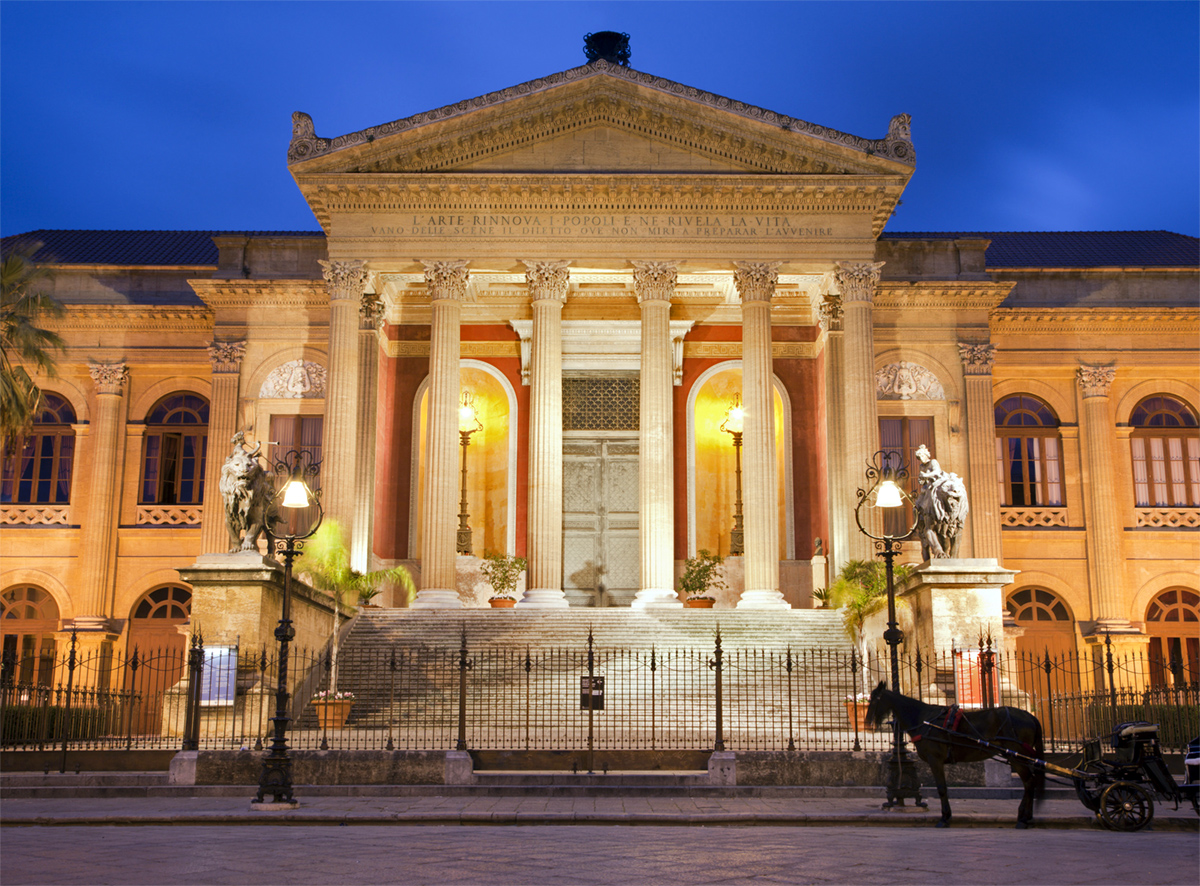
Teatro Massimo - Palermo
10. Duomo di Monreale
To get to the last stop of this Top 10 places in Palermo, we ask you to move just 8 kilometers and reach the town of Monreale with its famous Cathedral.
Every year, millions of tourists and pilgrims visit this sacred place, one of the most beautiful examples of Byzantine art in Italy. Built between 1154 and 1189 at the behest of the Norman king William II D'Altavilla, the Duomo is dedicated in honor of the Virgin Mary. The story goes that the Virgin appeared in a dream to Guglielmo II and indicated the place where a great treasure was hidden. As thanksgiving the king built a temple in her honor.
In addition to the two towers, the imposing facade also houses bronze doors of great value, one of which dates back to 1185 by Bonanno Pisano. The porch on the left side was made between 1547 and 1569 by Giovanni Domenico Gagini and Fazio Gagini; the high altar is work of Luigi Valadier and the organo of the 20th century is work of the Brothers Ruffati of Padua.
In addition to this, the interior of the Church hides many other treasures to discover, like the beautiful 12th-century Romanesque cloister.
TOUR TO MONREALE AND CEFALÙ FROM PALERMO
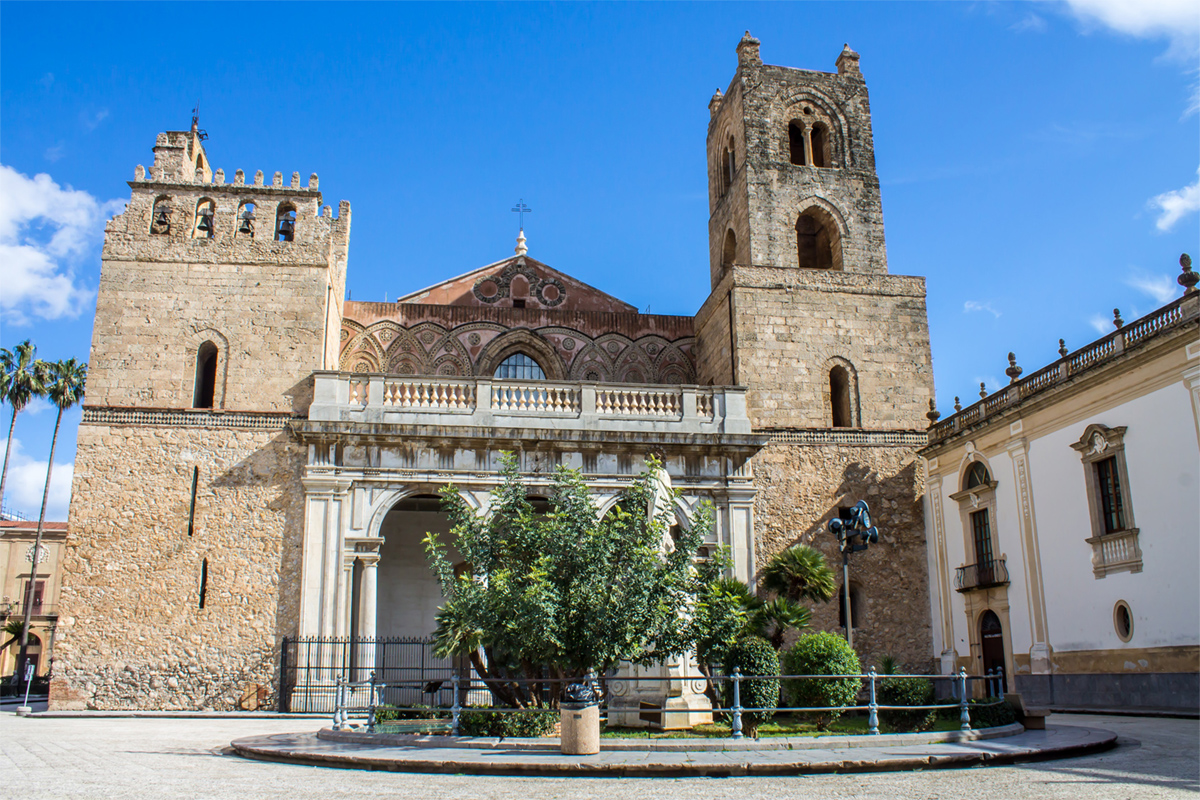
Duomo di Monreale
Here we are at the end of this long trip that has helped us discover this extraordinary magic in the air of Palermo. Colours, flavours and unique sensations that we are sure you'll take back home with you.
So, what are you waiting for? Get your luggage ready, let's travel! In fact, we remind you that every Friday from the Port of Civitavecchia, the Splendid by Grandi Navi Veloci (GNV) is ready to set sail to reach the Sicilian capital city... only you are missing.
Useful information
10 THINGS TO SEE IN PALERMO
- HOW TO GET THERE
Every Friday from the port of Civitavecchia you can reach Palermo thanks to GNV ferries. To learn more about departure times and other useful information, please click here.



 PORT MOBILITY CIVITAVECCHIA
PORT MOBILITY CIVITAVECCHIA








